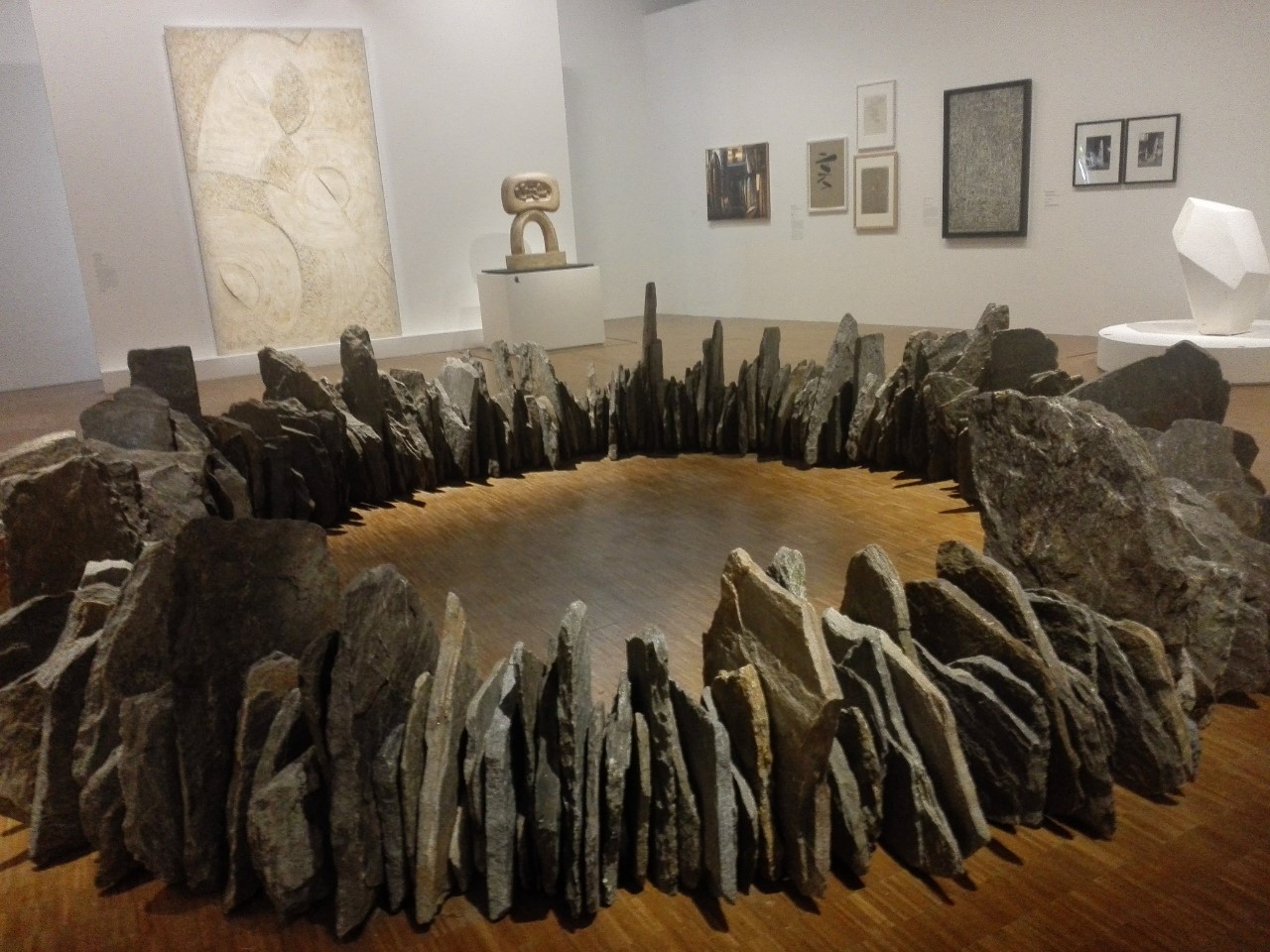That’s the question that Centre Pompidou, in Paris, tries to answer with this unusual exhibition.
Joachim Lutz, 1929
Prehistory isn’t my favourite topic, so I went there rather reluctantly, and was gladly surprised by what I discovered. Apparently there’s nothing new under the sun: some of the major modern artists such as Yves Klein, Paul Cézanne, Pablo Picasso were inspired by prehistory and the objects or artefacts that the archaeologists were discovering. It was a famous Danish archaeologist who first categorized those very remote times.
This “Venus” staty is around 23000 years old
The exhibition isn’t in chronological order: prehistoric objects are mixed with modern pieces of art. It wasn’t until 1820 that studies in the subject started and simultaneously artists’ imaginations went soaring. While admiring the different prehistoric pieces, drawings and prints, I was amazed at how humans always have been so much more than just “survival machines with high intelligence” as some would put it. It made me wonder about our origins and if we humans really have evolved so much since the beginning of times.
Pablo Picassos, woman figure, 1931
It seems that we have embedded in us a sense of beauty and art. Pablo Picasso’s female bust, from 1931, isn’t very dissimilar from the one of an anonymous artist made some 23000 years ago! Male- and female-bodies, as well as animals, have always fascinated humans. It’s interesting however that modern art developed parallel with the discovery and studies of prehistory. Yves Klein’s typical blue prints of female bodies resemble some of those found on cave murals. Henry Moore’s drawings I admired are also clearly inspired by prehistory, as well as Miró’s painting from 1933.
Juan Miro, 1933
The exhibition is divided into themes: “men and animals”; “gestures and tools”; “the cave” are some. It’s like a game or an exchange between modern and contemporary artworks and prehistoric ones. Joseph Beuyes’, the German artist, passion for prehistory led him to create a statue of cylinders. Alberto Giacometti painted elongated, somewhat erased figures, reminiscent of the ones found in caverns. Otto Dix concentrated his art on prehistoric, frightening beasts.
Alberto Giacometti, 1949-50
Prehistory, a modern mystery… For the first time such an exhibition is being shown. The theory of evolution is being questioned here. Have we really changed? Or were we designed from the beginning with all the necessary tools to conquer the world but equally to admire its beauty and to create art?
This exhibition resembles a dance between a very far off epoch and our modern technological time. It asks more questions than it answers but is definitely worth the detour!
Anne Edelstam, Paris
Louise Bourgeois, 1968







